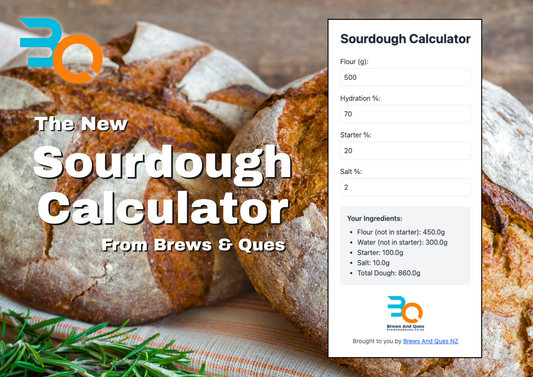Outline:
I. Home Brew Wine Introduction
II. Home Brew Wine Equipment
Home Brew Wine Kit
III. Home Brewing Process Overview
IV. Home Brew Wine Enjoyment and Storage
V. Conclusion
I. Home Brew Wine Introduction
Home Brew wine is a great way to enjoy your favorite beverage while also saving money. You can make wine from Wine Kits that are available at most stores, and the process is not difficult. In this article, we will discuss the benefits of home brewing wine, as well as the Equipment and Supplies you will need to get started. We will also outline the steps involved in the brewing process, and provide tips for enjoying your homemade wine.
A. Definition of Home Brew Wine
Home Brew wine is a process of making alcoholic beverages at home with minimal equipment and ingredients. Home brewing can involve a wide range of methods, but typically includes fermenting fruit juice, malt extracts, or other sources of sugar. Home brew wine typically involves a fermentation process that results in an alcoholic beverage, such as wine, beer, or cider. Home brew Wine Kits are available to purchase that make it easier and faster to produce a quality product.
B. Benefits of Home Brewing Wine
Home Brewed wine is a great way to save money on your favorite alcoholic beverages while also learning new skills and experiencing the satisfaction of making something yourself. In 2019, I brewed ten batches of red and white wine, which saved me over $200 compared to purchasing equivalent wines from the store. Home Brewing also allows you to customize your wines with different flavours, aromas, and body styles and can be shared or enjoyed as gifts, making it a great activity for parties or special occasions.

II. Home Brew Wine Equipment
A. Essential Home Brewing Supplies
Before you begin Home-Brewing wine, you'll need to have the right supplies and equipment. The following items are essential for making home brew wine:
1. Cleaning and Sanitation Supplies
These include brushes, sponges, sanitising solution, towels, etc. for cleaning fermentation vessels and bottles before use. This is an important step in Home Brewing to ensure that bacteria and other microbes don't spoil your wine.
2. Primary Fermentation Equipment
This includes a fermenter, airlock, stopper, and tubing for controlling the fermentation environment. The type of equipment you use will depend on the size and type of wine you are making.
3. Bottling Equipment
This includes bottles, caps, corks, bottle filler, capper/corker, labels, etc. This equipment is used to store your finished Home Brewed wine in sealed bottles after fermentation is complete.
B. Home Brew Wine Kit
Home Brew Wine Kits come with all the necessary ingredients for making quality wines at home quickly and easily:
1. The Components of a Home Brew Wine Kit
A typical home brew wine kit includes a fermenter, airlock, stopper, tubing, cleaning and sanitising supplies, bottles, caps/corks, bottle filler, capper/corker, labels, and ingredients such as juice concentrate or malt extract. Home Brew kits also come with detailed instructions for how to assemble and use the equipment.
2. How to Assemble the Home Brew Wine Kit
Assembling a home brew wine kit is easy. First make sure all of your equipment is clean and sanitised according to the manufacturer's instructions. Then assemble the primary fermentation equipment (fermenter, airlock, stopper and tubing) according to the instructions provided in the kit. Finally, add the ingredients to the fermenter and follow the instructions in the kit for how to proceed with fermentation.
III. Home Brewing Process Overview
Home Brewing is a process of making alcoholic beverages at home with minimal equipment and supplies that results in an alcoholic beverage, such as wine, beer, or cider. Home brewing involves several steps to complete the process, which include:
A. Preparation Steps for Home Brewing
Before beginning Home Brewing, it is important to make sure that all of the equipment and ingredients are sanitised and prepared properly in order to produce quality Home Brewed wines.
1. Cleaning and Sanitising Equipment
The first step in Home Brewing is to thoroughly clean and sanitise all of the equipment that will be used during the Home Brewing process. This includes fermentation vessels, bottles, caps/corks, stoppers, tubing, etc. It is best to use a no-rinse sanitising solution specifically designed for Home Brewing wine in order to ensure that all bacteria and other microbes are eliminated. Additionally, a brush or sponge should be used to scrub away any dirt or residue from fermentation vessels and bottles before they are sanitised.

2. Choosing Ingredients
The next step in Home Brewing is selecting the right ingredients for your desired wine style. Home Brew kits typically include juice concentrate or malt extract which provide sugar for the yeast to consume during fermentation. Additionally, brewers may choose to add other ingredients such as fruit juices, honey, spices, herbs or oak chips for added flavour and aroma complexity in the finished product.
3. Assembling Equipment
Once all of the equipment and ingredients have been gathered and sanitised, it is time to assemble them into a Home Brew system. This involves attaching tubing to the fermenter's airlock so that carbon dioxide created during fermentation can escape without allowing oxygen into the fermenter vessel, which can cause off-flavours in Home Brewed wine. Additionally, a bottle filler should be attached according to instructions on how full you would like each bottle filled with your Home Brewed wine so they can be corked or capped later on after fermentation is completed.
4. Temperature Control
Temperature control is an important part of Home Brewing as different types of beverages require different temperatures for optimal results. For example brewing lagers requires lower temperatures than ale fermentation which requires higher temperatures. If temperature control isn't possible then heating pads or blankets should be used around the fermenter vessel if needed depending on external environmental conditions such as winter weather and indoor temperatures which affect yeast performance when brewing beer or wine at home.
B. Fermentation Steps for Home Brewing
Once the Home Brew system is assembled and ingredients are gathered, it is time to begin the fermentation process. Home Brewing involves fermenting sugar into alcohol and carbon dioxide which in turn produces a beverage such as beer or wine. The fermentation process consists of three main stages: primary, secondary, and conditioning/aging.
1. Primary Fermentation
Primary fermentation is when the most active part of Home Brewing takes place as yeast consumes the sugars from juice concentrate or malt extract, converting them into alcohol and carbon dioxide. During this stage Home Brewers must ensure that their Home Brew remains in a closed environment free from oxygen in order to produce quality Home Brewed wines or beers. It is important to check on your Home Brew daily during this stage of fermentation to monitor temperature control and top up any liquid that has been lost during the course of fermentation. Once fermentation has slowed down and no more activity can be seen, it is time to move on to Secondary Fermentation.
2. Secondary Fermentation
Secondary Fermentation involves transferring your Home Brewed beverage into a clean second vessel with limited headspace in order to reduce the amount of oxygen exposure while allowing additional sedimentation to occur over time. This helps improve clarity by settling out solids which can cause off-flavours in finished Home Brewed beverages if left behind during bottling or kegging processes later on down the line. During this step Home Brewers may choose to add additional ingredients for flavour complexity such as fruit juices, spices, herbs or oak chips if desired before bottling or kegging their finished products.
3. Conditioning/Aging
Conditioning/aging involves storing Home Brewed beverages for an extended period of time (typically weeks) at cool temperatures (below 65°F) so that flavours can mellow out over time producing smoother tasting finished products with improved clarity depending on recipe used during brewing process. If Home Brewers wish to carbonate their Home Brews then they must add priming sugar during this process which will reactivate yeast present in solution allowing CO2 production as bottles condition over time leading up towards serving day!

C. Bottling Steps for Home Brewing
IV. Home Brew Wine Enjoyment and Storage
Once Home Brewers have completed the entire Home Brewing process, it is time to enjoy their hard work! Home Brewed Wines are best enjoyed when served cool (50-55°F) in a large stemmed glass in order to allow aromas to develop fully on the nose while also allowing Home Brewers to appreciate the unique flavours they have crafted themselves. Home Brewers should store their Home Brewed wines away from direct sunlight and at temperatures below 65°F with minimal oxygen exposure in order for them to age gracefully over time.
If Home Brewers wish for their Home Brewed Wines to remain sweet, then either potassium sorbate or sulphur dioxide can be added during fermentation prior bottling in order to stop yeast from multiplying any further thus preserving residual sugars present. Additionally, stabilisers such as tannins and oak chips can be added during bottling which will help improve stability of finished Home Brews leading up towards long-term storage periods.
When selecting bottles for Home Brewing Wine, Home Brewers should use bottles that are thick enough so that sedimentation does not occur over time and cause any off flavours or cloudiness as beers or wines mature over extended aging periods. Lastly, storing HomeBrews in an upright position should be avoided since contact between liquid and cork can lead to spoilage of flavour compounds over time due to the presence of oxygen within bottle necks when stored horizontally.
Home Brewer’s can also choose to keg their HomeBrewed compositions if desired as this provides a quicker method of carbonating beer or wine without having to wait weeks or even months as bottles condition during aging periods before serving day. While kegging requires some additional setup cost upfront compared with bottling HomeBrews it may be beneficial if your looking for speedier carbonation times with less effort overall compared with the bottling process described above!
A. Tips for Home Brew Wine Enjoyment
HomeBrewed Wines are best enjoyed when served chilled, at a temperature of between 50-55°F or 10-13°C which allows aromas to develop fully on the nose. Home Brewers should select large stemmed glasses to give them the opportunity to appreciate all elements of their wine and get a full appreciation for their hard work! In order to promote long-term storage, Home Brewers should store their Home Brew Wine away from direct sunlight and at temperatures below 65°F with minimal oxygen exposure. This will allow HomeBrewed wines to age gracefully over time without damaging flavour compounds present in the beverage.
To preserve sweetness in Home Brewed wines, Home Brewers can add either potassium sorbate or sulphur dioxide during fermentation prior bottling which will stop yeast from multiplying further thus preserving residual sugars present. Stabilisers such as tannins and oak chips can also be added during bottling which will help improve stability of finished Home Brews leading up towards long-term storage periods. Additionally, Home Brewers should use thick enough bottles so that sedimentation does not occur over time and cause any off flavours or cloudiness as beers or wines mature over extended aging periods. It is important to store HomeBrews upright rather than horizontally as contact between liquid and cork can lead to spoilage of flavour compounds over time due to oxygen within bottle necks when stored horizontally
If Home Brewers are looking for speedier carbonation times with less effort then they can choose to keg their HomeBrewed compositions instead of bottling them! Kegging requires some additional setup cost upfront compared with bottling HomeBrews but provides a quicker method of carbonating beer or wine without having to wait weeks or even months as bottles condition during aging periods before serving day.
Now that you know all there is about enjoying your delicious home brewed wines and beers, it’s time for you to sit back, relax and enjoy your special brew! The possibilities are endless when it comes creating unique flavours from scratch giving you plenty of opportunities to craft something truly special!
B. Home Brew Wine Storage Considerations
Home Brewers should store their Home Brew Wines away from direct sunlight and at temperatures below 65°F in order to preserve flavour compounds present in the beverage and promote long-term storage. This can be achieved by either placing HomeBrewed bottles in a cool dark area, such as a cellar or garage, or purchasing a wine fridge which will keep Home Brews at optimal temperatures for prolonged periods of time. Home Brewers should also make sure to avoid jostling HomeBrewed wines once bottled as this can cause oxygenation of the wine leading to oxidation and off-flavours over time.
Prior to bottling your wine, you can also add stabilisers such as tannins and oak chips which will help improve stability of finished Home Brews leading up towards long-term storage periods. To preserve sweetness in HomeBrewed wines, Home Brewers can add either potassium sorbate or sulphur dioxide during fermentation prior bottling which will stop yeast from multiplying further thus preserving residual sugars present.
It is important when selecting bottles for Home Brewing Wine that Home Brewers choose bottles that are thick enough so that sedimentation does not occur over time and cause any off flavours or cloudiness as beers or wines mature over extended aging periods. Furthermore, storing Home Brews in an upright position should be avoided since contact between liquid and cork can lead to spoilage of flavour compounds over time due to the presence of oxygen within bottle necks when stored horizontally.
When storing your HomeBrew Wine it is best practice to store it away from any strong smelling foods such as onions, garlic and cheese as volatile aroma molecules may transfer onto the surface of corks causing changes in aroma compounds and taste profiles of the brew over time if exposed for too long. It is also advised that when adding labels either purchased or handmade on your bottles that you use acid free paper as this will reduce chances of ink running into beer or wine if exposed to water vapour over time.
Overall, proper storage conditions for Home Brewed beer or wines are key factors for successful aging processes if one wishes their beers or wines to last over longer periods without spoilage becoming an issue due to improper storage practices. By following all these tips provided above, Home Brewers can optimise their Home Brewed beverages potential for prolonged storages enabling them create truly delicious beers and wines ready for enjoyment anytime!
Summary
Homemade wines can provide an immense sense of satisfaction and enjoyment when made correctly with the right ingredients and storage practices. Home Brewers should take care in selecting the correct bottles for their brews, adding stabilisers where necessary, and storing their beverages in a cool dark place at temperatures below 65°F to ensure flavours are preserved over time. By following these simple tips, Home Brewers can create delicious brews that will last for extended periods without any off-flavours or spoilage becoming an issue. Cheers!








